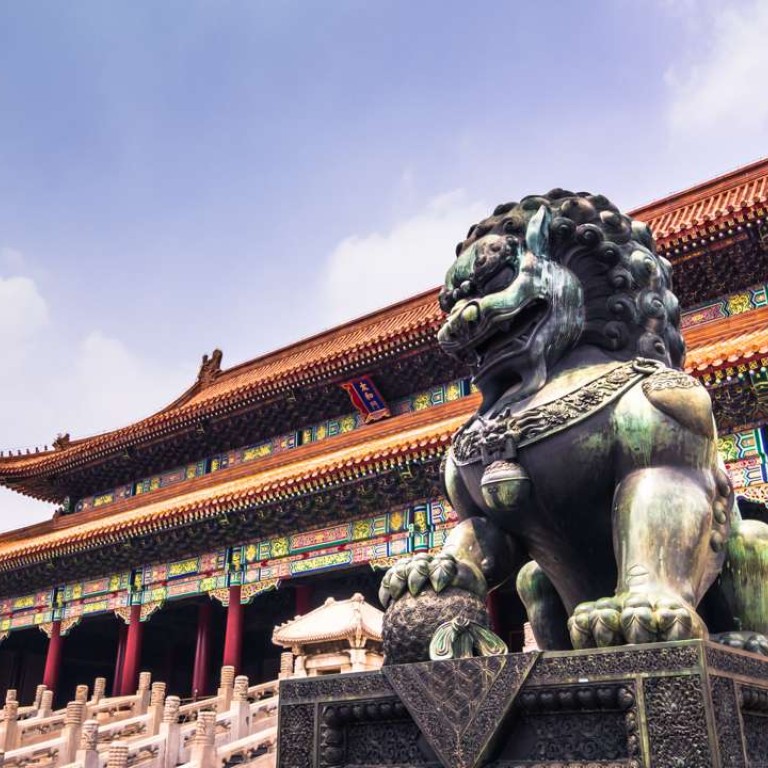
A Palace Museum in Hong Kong opens door to a wealth of treasures
Despite the furore over the government’s decision, an institution with access to the 1.8 million items in Beijing could be a great opportunity for the city - but only if its curators meet international standards
Well, they asked for it.
For years, officials told the Hong Kong public that their opinions mattered when it came to the fantastically expensive West Kowloon Cultural District. They held public consultations galore, leading to ever more delays in the start of construction. Then, the government shouted, “Surprise!” (or was it “Gotcha!”) as it presented the Hong Kong Palace Museum as a fait accompli.
People are not going to readily absolve the government for skipping the usual tendering procedures, hoodwinking lawmakers who monitor the district and behaving so furtively that its motives would inevitably be called into question. The patronising, lecturing tone of officials banging on about how people in this supposedly international city must learn “their own” culture doesn’t help, either.

If the project does go forward, other questions need to be asked about the content and how it is going to be presented.
But let’s get one thing straight. Chiang Kai-shek’s Kuomintang forces did not denude the Forbidden City of treasures when it decamped to Taiwan after the civil war, as some people claim, and the Beijing Palace Museum today has one of the world’s greatest collections of art.
It is true that the Kuomintang took nearly 700,000 extremely valuable pieces, which is why the National Palace Museum in Taipei is so wonderful. But there were many genuine treasures left in China. Take, for example, Along the River During the Qingming Festival. Taipei has an exquisite version of the painting, by Qiu Ying (1494-1552), the Ming dynasty painter, but Beijing has the Song dynasty original, by Zhang Zeduan (1085-1145).
Comparing the Palace Museum collection with what auction houses sell here would be like pitting a university graduate against a primary school student
“In the past, visitors to the Forbidden City mostly went to see the palaces but Shan Jixiang, the museum director, has overseen the installation of many new galleries. That has eased congestion along the central axis and also helped cultivate tourists into museum visitors,” says Josh Yiu Chun-chong, director of the Art Museum at the Chinese University of Hong Kong.

“Personally, I would love to see the Palace Museum Qianlong portraits by Giuseppe Castiglione,” says William Chak Kin-man, an antiques dealer and chairman of the Alliance in Support of Hong Kong Palace Museum. “It would be great, too, if we can get some of the museum’s amazing ceramics collection. Comparing the Palace Museum collection with what auction houses sell here would be like pitting a university graduate against a primary school student,” he says.

“The Grand Weddings of the Qing Emperors” is a travelling Palace Museum exhibition currently showing at the Hong Kong Heritage Museum and sponsored by the Hong Kong Jockey Club, the same body that is funding the future museum in West Kowloon. There are roughly 150 quality exhibits accompanied by elaborate multimedia presentations – the semi-dramatised audio guide is particularly engaging and informative.
On the day that The Collector attended, however, 95 per cent of visitors did not use the audio guide and instead strained their eyes to read the tiny captions, with their stilted Chinese and awkward English translations. Key questions were also left unanswered. What did they eat at the banquets? Why are we being told that the portraits of emperors and empresses reflected Western influences?
There is no transition between some of the segments, either. Why are we suddenly looking at bits of silk, beautiful though they may be? The lighting is appalling. Sure, these are national treasures that should be protected from light damage but if curators have judged that certain items can be displayed only in semi-darkness, what’s the point in showing them at all?
Two more Palace Museum exhibitions are due to come to Hong Kong this year, amid the furore over West Kowloon. But if the organisers want to open a local version of the real thing,they could start by putting more thought into the details.

